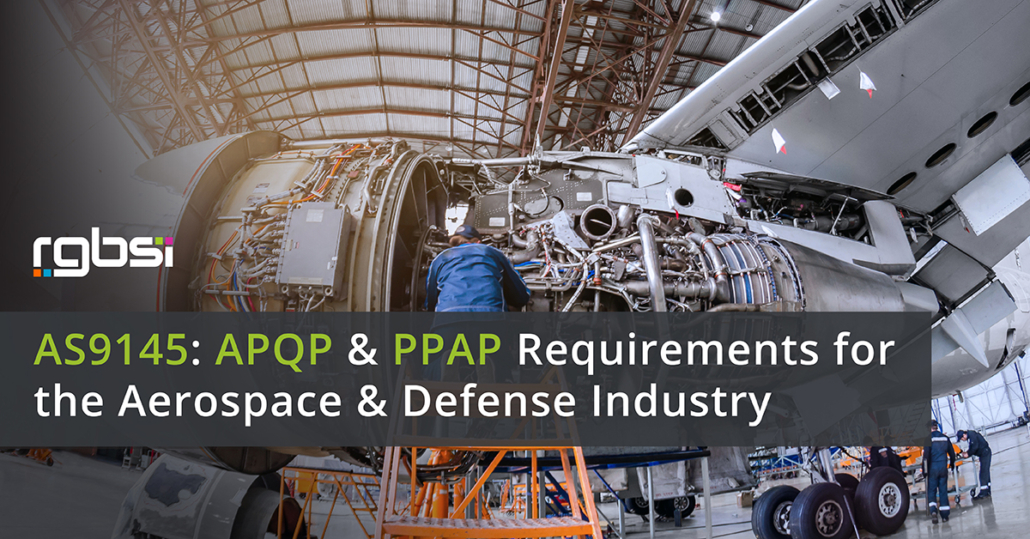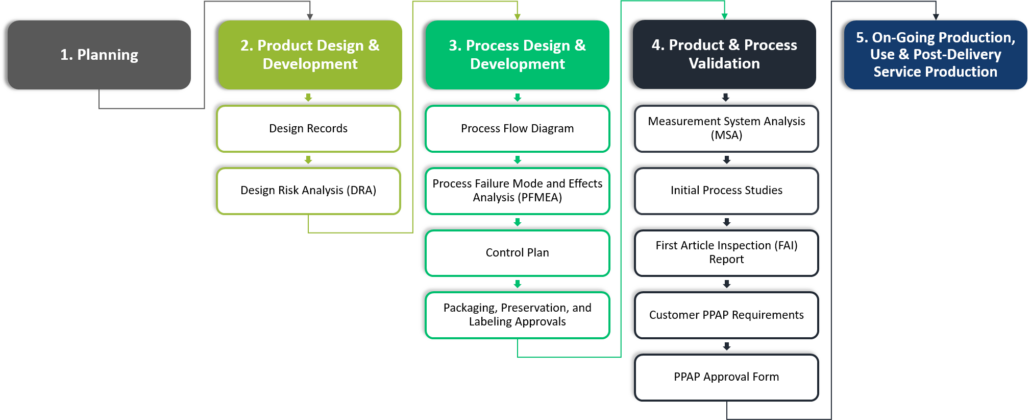AS9145 is a standard specific to the aerospace & defense industry and applies to new product development or existing product changes. It is a structured process that includes advanced product quality planning (APQP) and production part approval process (PPAP) as part of its requirements.
The International Aerospace Quality Group (IAQG) established the AS9145 standard in response to the aggressive customer and regulatory requirements predominant in the aerospace and defense industry. Customers in this space often expect suppliers to exceed their requirements. AS9145 provides a framework for suppliers to meet these vigorous demands through best practices.
APQP is a process that happens during the product development lifecycle to facilitate transparent communication and feedback throughout the supply chain. This process allows suppliers to detect errors early on, incorporate customer feedback, and deliver high-quality products. PPAP is an output of APQP. As the last step in the APQP process, PPAP demonstrates if a supplier can replicate parts’ production with consistency to a customer’s standards.
Advanced Product Quality Planning (APQP)
There are 5 phases of APQP which run concurrently:
AS9145 defines the APQP process and articulates the elements required for the PPAP submission as an aerospace and defense industry standard. The 11 elements support new product introduction and include:
- Design Records
- Design Risk Analysis (DRA)
- Process Flow Diagram
- Process Failure Mode and Effects Analysis (PFMEA)
- Control Plan
- Packaging, Preservation, and Labeling Approvals
- Measurement System Analysis (MSA)
- Initial Process Studies
- First Article Inspection (FAI) Report
- Customer PPAP Requirements (customers can add their requirements in addition to the standard.)
- PPAP Approval Form
AS9145 PPAP Requirements
The AS9145 standard specifies which PPAP elements to maintain through the product development lifecycle and serves as evidence of conducting APQP. The assembling of PPAP elements occurs during APQP.
The generated PPAP file submission comprises the 11 required elements specific to the aerospace & defense industry and any additional documentation that the customer requires. The PPAP submission also includes a PPAP approval form for the customer to record its disposition. Once reviewed, the customer dispositions the PPAP form with one of the following submission statuses:
- Approved – the submission meets the PPAP and customer requirements, and the product can be shipped.
- Interim Approval – the submission does not fully meet the PPAP and customer requirements, and the product can be shipped only under customer specified conditions.
- Rejected – the submission does not meet the PPAP and customer requirements, and the product cannot be shipped.
The AS9145 standard provides advantages for aerospace & defense sectors during new product development and existing product change processes. It helps strengthens validity with early detection of defects and elimination of risks. Also, AS9145 provides structured control processes for suppliers to deliver safe, reliable products that meet customer quality requirements.






Integrating 3D Printing and Industry 4.0
Advanced Manufacturing, Systems and TechnologiesAS9145: APQP & PPAP Requirements for the Aerospace & Defense Industry
Quality Solutions, Supply Chain OptimizationHow does Machine Learning (ML) Enhance Manufacturing?
Advanced Manufacturing, Systems and Technologies